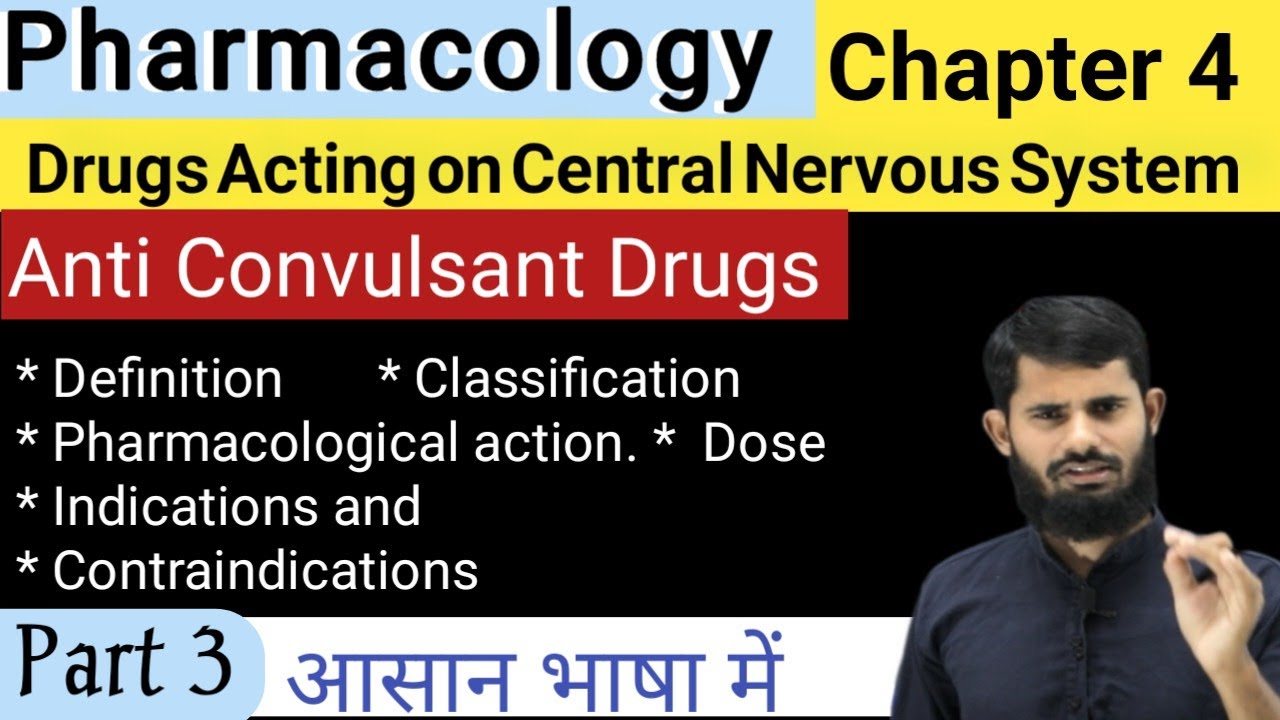Muscle Relaxers - Mechanisms, Indications, Side Effects
Summary
TLDRThis video covers the topic of muscle relaxants, which reduce muscle tone and treat conditions like muscle spasms, hyperreflexia, and pain. Muscle relaxants are divided into neuromuscular blockers and spasmolytics. Neuromuscular blockers work peripherally to induce short-term paralysis during surgery, while spasmolytics act centrally in the brain or spinal cord. The video explains various drugs like diazepam, baclofen, tizanidine, and dantrolene, their mechanisms, and their use in conditions such as multiple sclerosis, cerebral palsy, and spinal cord injuries. It also emphasizes the potential side effects and precautions of these medications.
Takeaways
- 💊 Muscle relaxants decrease muscle tone and are used to treat symptoms such as muscle spasms, hyperreflexia, and pain.
- 🧠 Muscle relaxants are divided into two groups: neuromuscular blockers and spasmolytics. Neuromuscular blockers work at the neuromuscular junction, while spasmolytics act centrally in the brain or spinal cord.
- ⚡ Neuromuscular blockers are used for short-term flaccid paralysis during surgeries and procedures like intubation by blocking nicotinic 1 receptors.
- 💡 Spasmolytics, often referred to as muscle relaxants, are used to treat painful musculoskeletal conditions and disorders like multiple sclerosis and cerebral palsy.
- 🧬 Diazepam, a benzodiazepine, enhances GABA-A receptor activity, increasing chloride permeability in lower motor neurons, causing hyperpolarization and reducing muscle contraction.
- 🦴 Baclofen, used for spinal cord injuries, activates GABA-B receptors, increasing potassium conductance and reducing excitatory neurotransmitter release, leading to muscle relaxation.
- 🔗 Tizanidine is an alpha-2 agonist that decreases the release of excitatory neurotransmitters, used for managing spasms associated with multiple sclerosis.
- ⚙️ Dantrolene, a direct-acting muscle relaxant, blocks ryanodine receptors in skeletal muscles, preventing calcium release and muscle contraction, making it useful for conditions like malignant hyperthermia.
- 🚫 Muscle relaxants acting in the CNS can cause adverse effects like dizziness, fatigue, muscle weakness, and euphoria, with cautions against alcohol use and driving.
- ⚠️ Commonly prescribed muscle relaxants for local spasms include carisoprodol, cyclobenzaprine, and metaxalone, though their mechanisms are not well understood.
Q & A
What are the two major groups of muscle relaxants?
-The two major groups of muscle relaxants are neuromuscular blockers and spasmolytics.
What is the primary function of neuromuscular blockers?
-Neuromuscular blockers block nicotinic 1 receptors at the neuromuscular junction, preventing skeletal muscle contractions, often used during surgeries and intubation to induce short-term flaccid paralysis.
How do spasmolytics work in the body?
-Spasmolytics work primarily in the central nervous system, either at the spinal cord or brain level, to reduce muscle tone and spasms.
What are some common indications for the use of muscle relaxants?
-Muscle relaxants are indicated for treating painful musculoskeletal conditions such as muscle spasms, hyperreflexia, and conditions like multiple sclerosis and cerebral palsy.
How does diazepam work as a muscle relaxant?
-Diazepam, a benzodiazepine, enhances the effect of GABA by increasing chloride permeability in the lower motor neurons, which hyperpolarizes the cell, reducing muscle spasms.
What is the mechanism of action for baclofen?
-Baclofen activates GABA-B receptors, increasing potassium conductance and hyperpolarizing lower motor neurons. It also reduces excitatory neurotransmitter release by decreasing calcium influx in upper motor neurons.
What role does tizanidine play in muscle relaxation?
-Tizanidine is an alpha-2 agonist that reduces excitatory neurotransmitter release, commonly used for managing muscle spasms in conditions like multiple sclerosis.
How does dantrolene differ from other muscle relaxants in terms of its mechanism?
-Dantrolene acts directly on skeletal muscles by blocking ryanodine receptors, preventing calcium release from the sarcoplasmic reticulum, thereby inhibiting muscle contraction.
What is malignant hyperthermia, and how is it treated?
-Malignant hyperthermia is a severe reaction to certain anesthetics, characterized by muscle rigidity and fever. It is treated with dantrolene, which prevents excessive calcium release in muscles.
What are common adverse effects associated with CNS-acting muscle relaxants?
-Common adverse effects include euphoria, dizziness, fatigue, and muscle weakness. Patients should avoid alcohol and be cautious when operating machinery.
Outlines

Esta sección está disponible solo para usuarios con suscripción. Por favor, mejora tu plan para acceder a esta parte.
Mejorar ahoraMindmap

Esta sección está disponible solo para usuarios con suscripción. Por favor, mejora tu plan para acceder a esta parte.
Mejorar ahoraKeywords

Esta sección está disponible solo para usuarios con suscripción. Por favor, mejora tu plan para acceder a esta parte.
Mejorar ahoraHighlights

Esta sección está disponible solo para usuarios con suscripción. Por favor, mejora tu plan para acceder a esta parte.
Mejorar ahoraTranscripts

Esta sección está disponible solo para usuarios con suscripción. Por favor, mejora tu plan para acceder a esta parte.
Mejorar ahora5.0 / 5 (0 votes)






